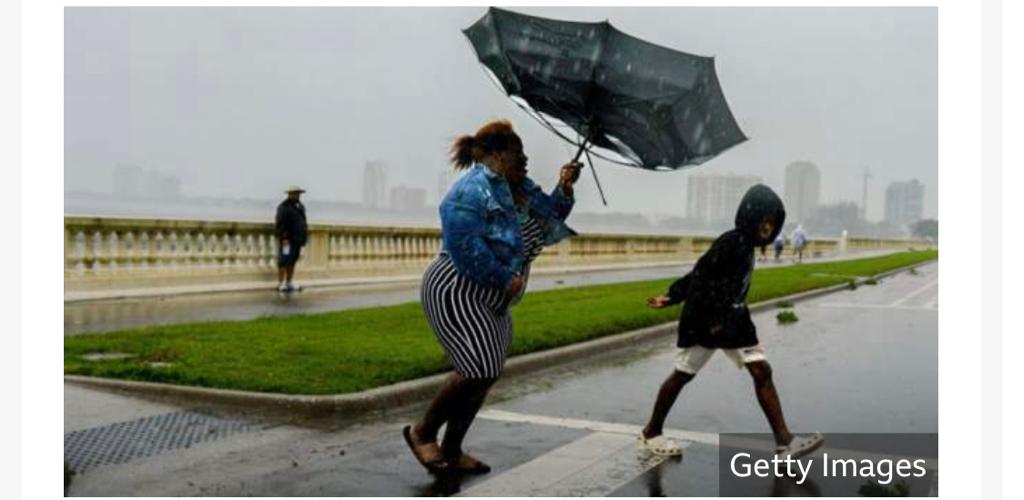Hurricane Ian, which peaked at a category four storm, is bringing severe flooding, high winds and storm surges to Florida
It is now losing power as it moves inland, and has been downgraded to a category one system
But more than two million people in Florida have no electricity, and cities have been left submerged by flood water
The hurricane made landfall on Wednesday near the city of Fort Myers
Florida Governor Ron DeSantis warns people to get ready for “a nasty, nasty” couple of days
Dan Allers is a councillor in Fort Myers Beach, south-west Florida – one of the worst affected areas hit by the storm.
Speaking to the BBC, he says he estimates that the area saw a 12 to 14ft (3.5-4m) storm surge with “excessive” winds.
“To say it’s devastation would be a severe understatement. Just watching people’s belongings and homes and things float by – it was a very tough scene to witness,” he says.
Allers says he is from the Midwest and has experienced several tornados. “If you can imagine multiplying one by 100, and having it sustained for about 12 hours – and adding the water rush in at 14ft, that gives you just a little bit of a glimpse as to what it was like,” he says.
“I’ve just got off the phone with the fire chief for our area. In his words, he said to use the word ‘catastrophic’ would be a severe understatement. We have lost most of our entertainment district, many, many businesses, many, many homes. They’re starting the search-and-rescue efforts as we speak,” he adds.
Along the waterfront in St Petersburg, residents are waking up in relief having dodged the worst of Hurricane Ian.
Officials are urging people to continue to shelter, saying the storm still poses a danger.
But as daylight broke some locals were already venturing out for a jog.
Boat owners walked the docks looking for any signs of damage and fire rescue vehicles could be seen driving around.
But for now, there is minimal structural damage in the city once braced for the worst.
BBC


